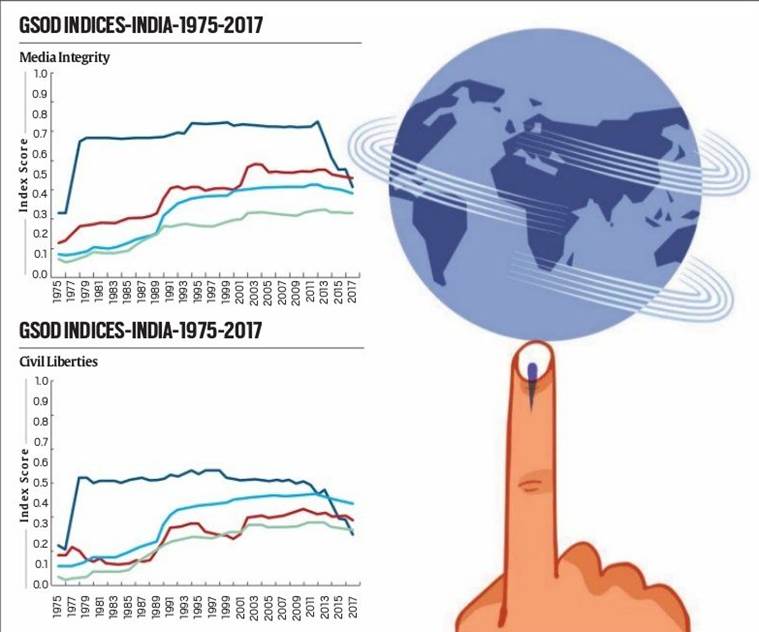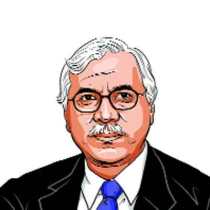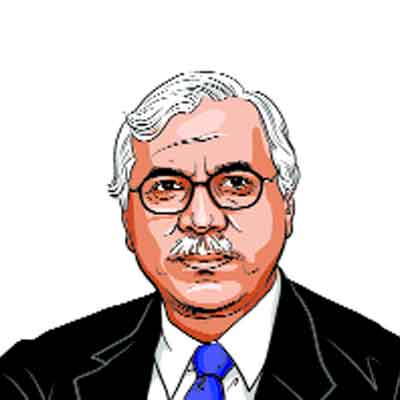Performing moderately
A new state of democracy report records a significant dip in India’s record on civil liberties, personal integrity and security, freedom of association, media integrity, gender equality

South Asia is home to 3 per cent of the world’s area and 21 per cent of the world’s population. (Illustration by CR Sasikumar)
Today, the world celebrates the 11th International Day of Democracy in pursuance of a UN resolution. This is an appropriate occasion to have a look at the state of democracy in South Asia, especially India.
The world saw a huge wave of democratisation after World War II. The newly-liberated states in Latin America, Africa and Asia adopted democratic forms of government after centuries of colonial subjugation. Today more people live under various forms of democracy than ever before. More than 120 of the 192 countries in the world have some form of democracy — only 11 parliamentary democracies existed in 1941. This indicates the appeal of democratic ideas and systems.
South Asia is home to 3 per cent of the world’s area and 21 per cent of the world’s population. It’s significant that 50 per cent of the world’s population living under some form of democratic rule resides in this region. Despite the democratic upsurge, there are significant challenges like poverty, inequality, gender injustice, nepotism and corruption. Elected despots and authoritarian leaders are weakening democracies across the world. Political experts have argued that democratic values are on the decline, especially in the West.
The International Institute for Democracy and Electoral Assistance (IDEA), an inter-country organisation, tried to evaluate the state of democracy in the world in the light of such worrying claims. The Global State of Democracy Index (GSoD) looks at the trends in democratisation from 1975 to 2017. With the help of a set of 98 indicators, IDEA aims to study the factors which threaten democracy throughout the world and those that make it strong and resilient. The study covers a variety of important indicators such as representative government, fundamental rights, checks on the government, impartial administration and participatory engagement. These have many sub indicators for an in depth indices-based analysis.
When it comes to representative government, India and Sri Lanka have maintained relatively high scores. Afghanistan, Bangladesh, Nepal and Pakistan have had periods of non-elected regimes. The general trend in South Asia in this respect has, however, been positive.
With respect to ensuring fundamental rights, the region’s score matches that of Asia Pacific but it is slightly below the global average. At the country level, Afghanistan and Nepal have seen the most improvement. Sri Lanka and Pakistan saw a slight decline in the 1970s and 1980s. India’s score has been stable since the late 1970s. However, a decline has been observed since 2015.
South Asia shows a steady improvement on the yardstick that measures gender equality with Nepal standing out. India’s score was better than the world average till 2003 but there has been a dip in the country’s performance on the gender equality yardstick since then.
When it comes to checks on government, South Asia has shown a steady increase from 1975 to 1994. Afghanistan, Nepal and Pakistan have shown the most improvement. Bangladesh, India and Sri Lanka have remained relatively stable with scores in line with the global average.
In the yardstick on impartial administration, South Asia follows both the regional and global trends with no significant change, except in Nepal, which has seen a significant improvement. However, the “absence of corruption” sub-indice within the “impartial administration” category shows a worrying tendency in South Asia. The region has the lowest scores in the world despite a slight improvement between 2012 and 2015.
A robust civil society is essential for deliberative decision making. Civil society participation has increased in India by leaps and bounds between 1978 and 2012 after which it declined drastically to fall below the average of Asia Pacific and that of the World. In 2017, it was the lowest since 1975.
In 2017, the gap between the Indian score and the world average in the yardstick that measures “personal integrity and security” was the widest since 1977. This is worrying. In the past 10 years, South Asia’s scores for electoral participation are in line with the global average but slightly below the Asia Pacific average. Recently, there has been a decrease in voter participation in Bangladesh but a slight increase in India and Sri Lanka.
One of the major challenges to democracy is people losing faith in it. There are many reasons for such disillusionment, including corruption, nepotism and unemployment. This often leads to people disengaging with key public policy issues which, in turn, makes those in power less accountable. Other factors, in contrast, contribute to the popularity of democracies. These include transparency in political processes, accountability of elected representatives, basic freedoms for all citizens, equal rights for women and minorities and high rates of voter participation.
The GSoD report analyses India’s performance on all the above-mentioned indicators and shows that the country has done moderately well. On yardsticks such as elected government, effective parliament and impartial administration, the country’s scores hover around the world average but in the last decade, there has been a significant dip in the country’s record on civil liberties, personal integrity and security, freedom of association, media integrity, gender equality and basic welfare.
In fact, India’s performance on the yardstick to measure media integrity was better than the global and South Asian average between 1994 and 2012. However, the country’s score has fallen below the global and Asia-Pacific average in 2017. Given that a free and fair media is crucial to a meaningful democracy, this is a worrying tendency.
The Election Commission has played an important role in conducting free and fair elections in the country. The Commission’s Systematic Voters Education for Electoral Participation Programme role has been crucial in this respect.
An independent judiciary is another reason for the resilience of democracy in India. The apex court has given judgments that keep a check on the government and ensure a transparent and accountable system.
An independent judiciary is another reason for the resilience of democracy in India. The apex court has given judgments that keep a check on the government and ensure a transparent and accountable system.
Democracy does not merely mean voting rights for people, it means empowering people by granting them equality. It also means the creation of mechanisms to resolve differences through dialogue and with mutual respect and understanding.
India does have the highest rating among South Asian democracies. But its performances on several yardsticks makes it a flawed democracy. If we want the largest democracy to count among the world’s greatest, there must be serious introspection among all stakeholders.
The writer is former Chief Election Commissioner of India. He has been a member of Board of Advisors for the Institute for Democracy and Electoral Assistance (IDEA) since 2012. Views are personal.
For all the latest Opinion News, download Indian Express App
More From S Y Quraishi
- What I saw in PakistanIts general election was conducted in a transparent manner, with robust processes ..
- Karnataka leftoversThe political drama has stoked important questions about parties, alliances, and the role of governor..
- Elections in the time of Cambridge AnalyticaStricter data protection laws are required to ensure that political parties do not indulge in practices that involve undue influencing of voting behaviour...








































No hay comentarios:
Publicar un comentario